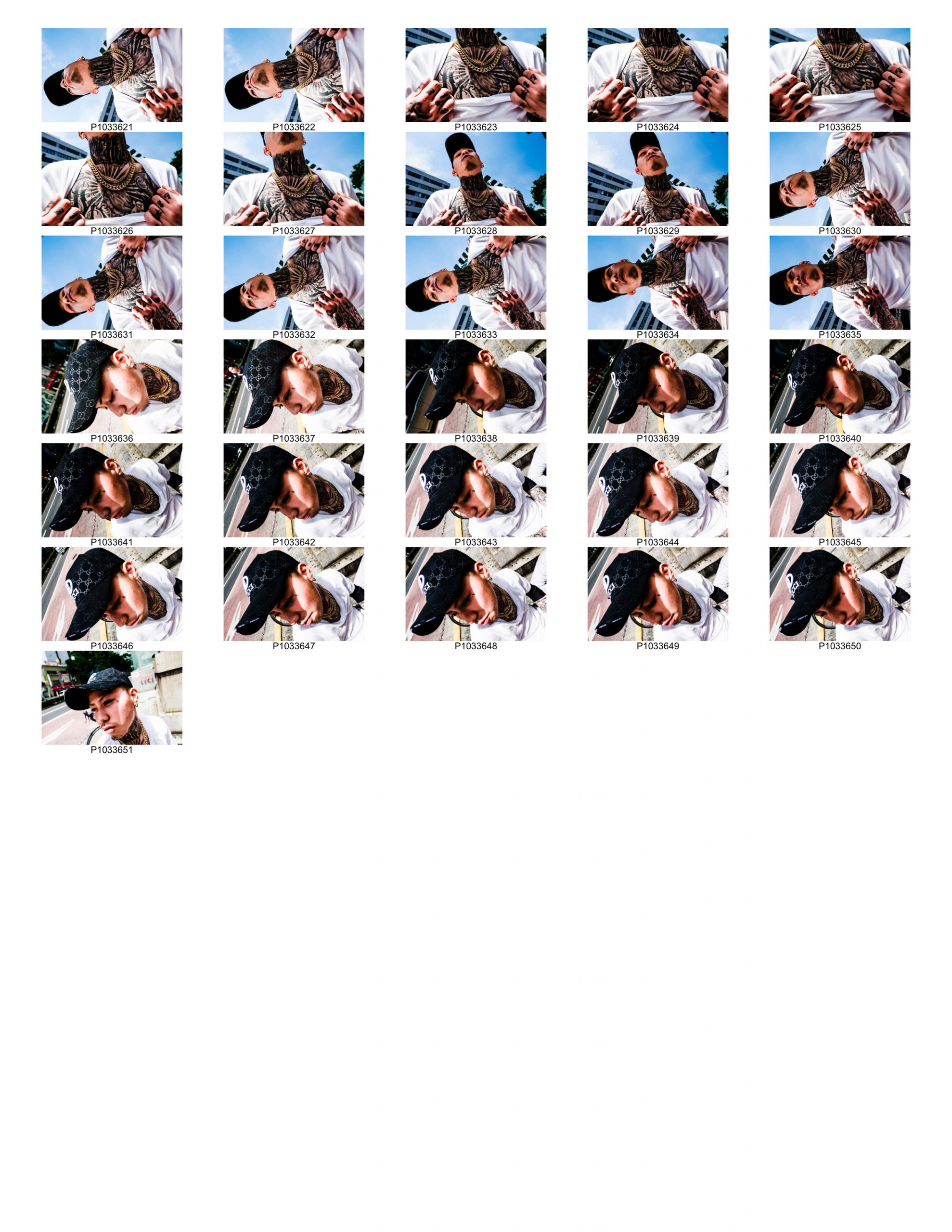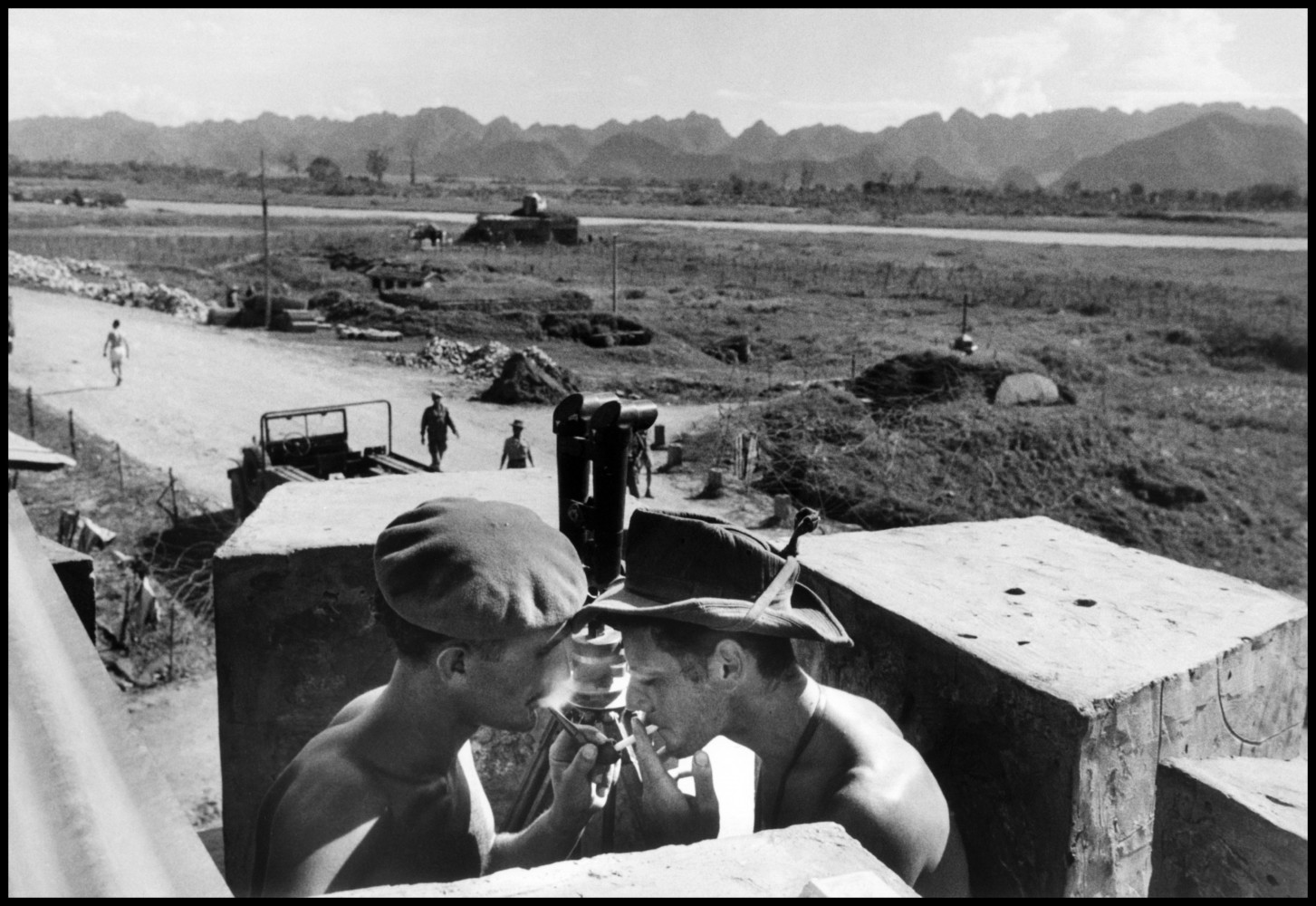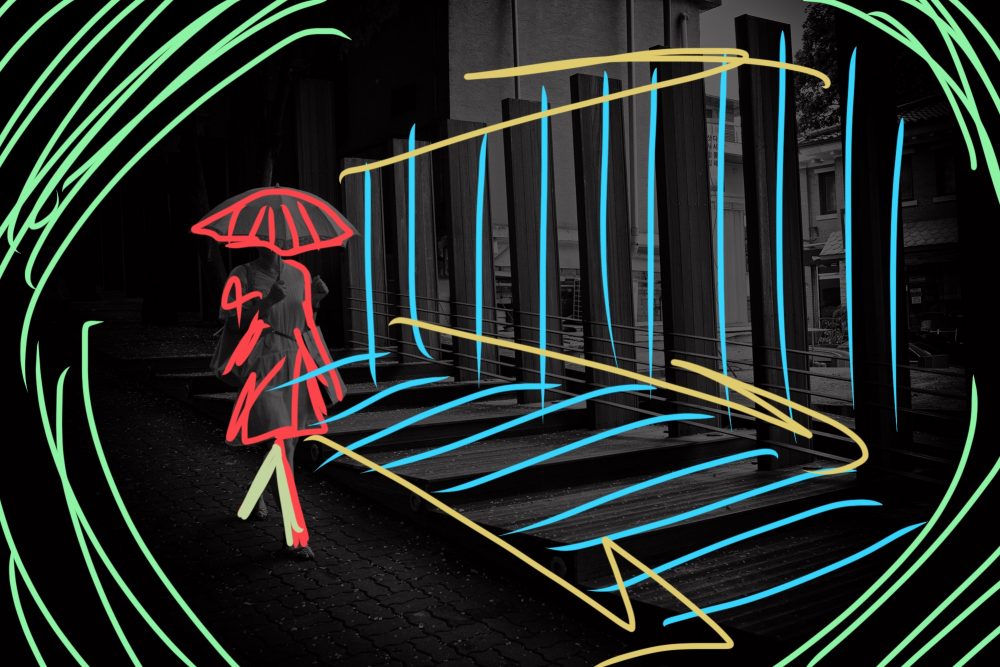I don’t think anyone has really given a great effort in trying to create a philosophy of composition — especially in photography.
Here we go:
What is composition?
The etymology of composition:
To break it down:
- con means ‘with’.
- positio means position, place, framing.
Therefore a composition simply means:
How do you position, place, and frame things together?
Composition in photography
In photography we have a frame. How do we organize visual elements within the frame? This is the goal of composition.
To simplify
One goal in photography: to create images which are simple and powerful.
Thus when we are composing and framing our shot, strive to simplify. Subtract the superfluous.
Flash in photography to simplify
A benefit of flash photography:
When you use a flash, you simplify the image. Why? You allow the subject to ‘pop out’ of the frame, and create a stronger ‘figure to ground‘ between the subject and background.
Why black and white?
Monochrome is great, as is the simplest aesthetic we have to strengthen our images.
When reality is stripped of color, all we have left is shape, form, texture, tone:












I don’t necessarily think black and white is superior to color, but I would say black and white is certainly SIMPLER than color.
And in my book and philosophy of aesthetics:
Strong and simple aesthetics reign supreme.




What is the purpose of composition?
Now a big question:
What is the practical or pragmatic purpose of a composition?
Well, in the context of photography, framing is everything.
For example let us think about a camera. The lens (one eye) can only see so much. The lens has a limited perspective.
Reality is insanely infinite.
However, reality is unlimited. With reality, there are a TRILLION x TRILLION ways to photograph. There is three dimensional space, and everything is always changing.
This is where 360/VR technology is fascinating to me: you capture EVERYTHING.
But still in the context of still photos: you cannot photograph everything in a single frame. You must decide what to include in your frame and what to exclude.
Also probably more important figuring out what to EXCLUDE from your frame than to figure out what to INCLUDE.









How close do you get?
One big thing in composition:
How close or far you are from your subject.
For example, photos of a wing:

Showing the whole wing 
Showing an individual feather 
Getting super close (macro mode) to details in a feather.
Which composition (framing) is most interesting?
To me, the macro photo is the most interesting. “Filling the frame” with the texture and detail.
Thus the adage:
When in doubt, get closer.
The famous Robert Capa quote:
And this is precisely the genius of Robert Capa: not his clever compositions, but the fact is how he got SO CLOSE (emotionally and physically) to his subjects!



















Current takeaway:
The best compositions are CLOSE, intimate, simple, dynamic, and soulful!
ERIC
Composition 101 >
In pursuit of making (greater) compositions!
Philosophy of Composition

Aesthetics

- Image Quality and Great Photos
- Imperfect Photos are More Beautiful
- Do you photograph the world better, the same, or worse than reality? #aesthetics
- Aesthetics are Ethics
- Beauty over Truth #philosophy #aesthetics
- Philosophy of Aesthetics and Beauty in Photography
- Aesthetics in Photography
- Aesthetics Strengthen, Simplify, and Focus
- Not better image quality; more beautiful aesthetics!
- Why Aesthetics?

Master composition for yourself:
Photography Composition Concepts

- Re-Interpret your Photos
- Visual Gist
- Dynamic Composition
- 10 Tips How to Work Your Compositions in Photography
- Composition for the Sake of Composition
- The Gaussian Blur Test
- How to Teach Yourself Photography Composition
- Composition vs Aesthetics in Photography
- 10 Simple Composition Tips to Make Better Photos
- How to Compose a Photograph
- Edge Detection Photography Composition
- Vector (Arrow) Photography Composition
- Clear and Obscure (Chiaroscuro) Photography Composition
Street Photography Composition Tips

- 7 Street Photography Composition Tips
The Superman Low Angle Perspective Photography Composition Effect - High Angle Perspective Street Photography Composition Technique
- How to Shoot Low Angle Perspective Street Photography Composition Technique
Photography Composition Tips

- 5 Photography Composition Ideas
- How to Photograph Motion
- Photography Composition: Which Direction is Your Subject Looking?
- Blocking Technique in Photography
- How to Shoot a Triangle Photography Composition
- How to shoot a golden triangle composition in street photography
- 8 Simple Curve Composition Tips
- 5 Simple Henri Cartier-Bresson Composition Tips
- Foot Zoom
- Photography Composition: Light and Dark
- Street Photography Composition Lesson #16: Scale
- Shape, Arrangement, Position (S.A.P.) and Contour, Inter-Contact, Position (C.I.A.) in Photography
- 10 Tips How to Fill the Frame in Photography
- Look Up! 16 Photography Composition Perspective Tips
- 5 Simple Street Photography Composition Tips
- Depth Perception
- Golden Angle Composition in Street Photography
- Photographer as an “Arranging Artist”
- Dynamic Off-Center Street Photography Compositions
- 5 Essential Composition Tips in Photography
Color Theory

- Red and Green Composition Color Theory For Photographers
- The Ultimate Beginner’s Guide to Color Photography
- Opponent Process Color Theory For Photographers
- Color Theory For Photographers
- Color Manual
- How to Shoot Color Street Photography
Learn From the Masters of Composition

- 10 Lessons Matisse Can Teach You About Art and Life
- Henri Cartier-Bresson Composition
- 10 Timeless Lessons Edward Weston Can Teach You About Photography
- 10 Inspirational Sergio Larrain Compositions
- 5 Henri Cartier-Bresson Photography Composition Lessons
Dynamic Photography Composition 101

- Introduction to Dynamic Photography Composition
- How to Visually Analyze Your Photography Compositions
- Dynamic Tension: Opponent Based Theory For Photography
- Opponent Process Color Theory For Photographers
- Dynamic Photography Composition 101: Figure to Ground
Painting Compositions

Dynamic Photography Composition Tips

- 7 Simple Photography Composition Tips
- How to Make Aggressive Photography Compositions
- 10 Dynamic Photography Composition Tips
- How to Make More Dynamic Picture Compositions
- Unorthodox Photography Composition Techniques
- Deconstructed: Saigon Eric Kim Photos
Composition Theory

Take your composition to the next level:
- Gestalt Theory
- Juxtaposition
- Center Eye
- Low-Angle
- Dutch Angle
- Deep Depth
- Spacing
- Silhouette
- Leading Lines
- Figure to Ground
- Fibonacci Spiral
- Cropping
- Emotion
- Composition by Eric Kim
Street Photography Composition 101

For distilled lessons on composition, read the free ebook: “The Street Photography Composition Manual.”
Further articles to improve your compositions in photography:
- Composition Lesson #1: Triangles
- Composition Lesson #2: Figure-to-ground
- Composition Lesson #3: Diagonals
- Composition Lesson #4: Leading Lines
- Composition Lesson #5: Depth
- Composition Lesson #6: Framing
- Composition Lesson #7: Perspective
- Composition Lesson #8: Curves
- Composition Lesson #9: Self-Portraits
- Composition Lesson #10: Urban Landscapes
- Composition Lesson #11: “Spot the not”
- Composition Lesson #12: Color Theory
- Composition Lesson #13: Multiple-Subjects
- Composition Lesson #14: Square Format
Composition Theory

Learn compositional theory:
- Why is Composition Important?
- Don’t Think About Composition When You’re Shooting Street Photography
- How to Use Negative Space
- Street Photography Composition 101
- The Theory of Composition in Street Photography: 7 Lessons from Henri Cartier-Bresson
Compositional lessons from the masters of art
Composition lectures
Composition pictures/grids


Golden Diagonal Composition



































